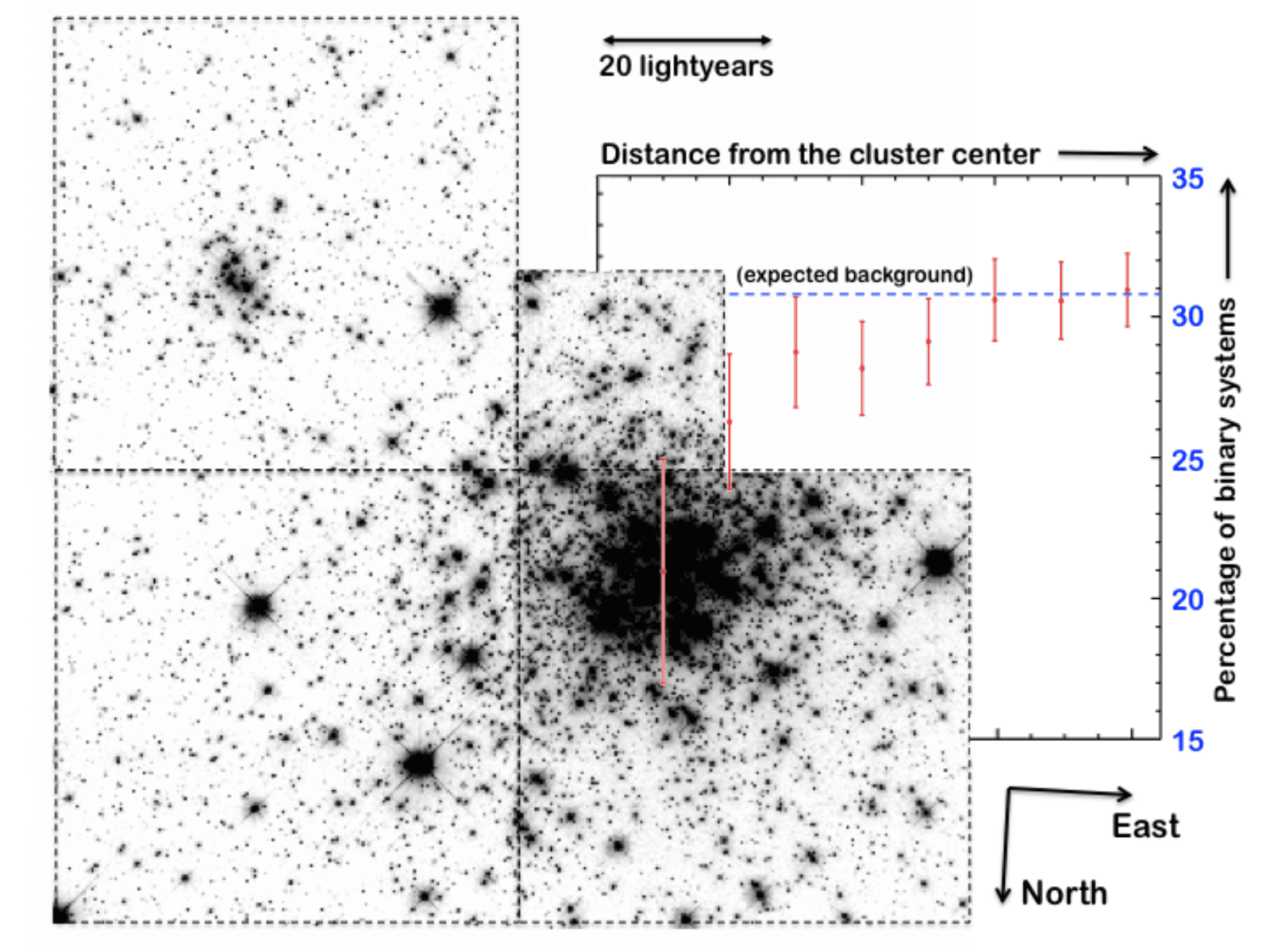A Simple View Of Gravity Does Not Fully Explain The Distribution Of Stars In Crowded Clusters

February 20, 2013
Gravity remains the dominant force on large astronomical scales, but when it comes to stars in young star clusters the dynamics in these crowded environments cannot be simply explained by the pull of gravity.
After analyzing Hubble Space Telescope images of star cluster NGC 1818 in the Large Magellanic Cloud, a satellite galaxy of the Milky Way, researchers at the Kavli Institute for Astronomy and Astrophysics (KIAA) at Peking University in Beijing found more binary star systems toward the periphery of cluster than in the center – the opposite of what they expected. The surprising distribution of binaries is thought to result from complex interactions among stars within young clusters.

The team’s finding will be published in the March 1 print issue of The Astrophysical Journal and is now online.
In the dynamic environment of a star cluster, high-mass stars are thought to gravitate toward the center of a cluster when they give a ‘kick’ to lower-mass stars and lose energy, explained KIAA Prof. Richard de Grijs, who led the study. This leads them to sink to the cluster center, while the lower-mass stars gain energy and might move to orbits at greater distances from the cluster core. Astronomers call this process “mass segregation.”
However, when the Kavli researchers looked closely at binary star systems within NGC 1818, they found a much more complex picture.
Most stars in clusters actually form in pairs, called “binary stars,” which initially are located so close to one another that they interact, resulting in the destruction of some binary systems. Other binaries, meanwhile, swap partners. Astronomers had expected that the same process that leads a cluster’s most massive stars to gravitate toward the center would also apply to binaries. This is because together, the stars that make up binaries have more mass on average than a single star.
When the astronomers discovered that there were more binaries the farther from the core they observed, they were initially baffled by this unexpected result. They concluded that so-called “soft” binary systems, in which the two stars orbit each other at rather large distances, are destroyed due to close encounters with other stars near the cluster’s center. Meanwhile, “hard” binaries, in which the two stars orbit one another at much shorter distances, survive close encounters with other stars much better, all throughout a cluster. This is why more binaries were seen farther out than close in.
Mapping the radial distribution of binary systems in dense star clusters had never been done before for clusters as young as NGC 1818, which is thought to be 15-30 million years old. This is difficult to do in any case, because there are no young clusters nearby in our own Milky Way galaxy. The new result provides new insights into theoretically predicted processes that govern the evolution of star clusters.
“The extremely dynamic interactions among stars in clusters complicates our understanding of gravity,” team member Chengyuan Li said. “One needs to investigate the entire physical environment to fully understand what’s happening in that environment. Things are usually more complex than they appear.”